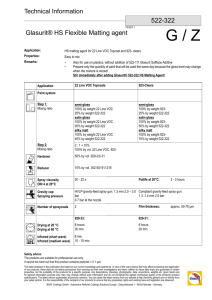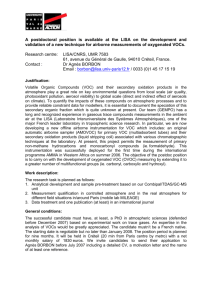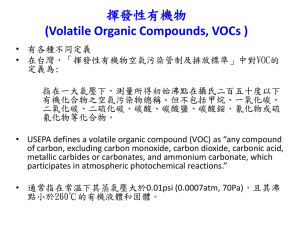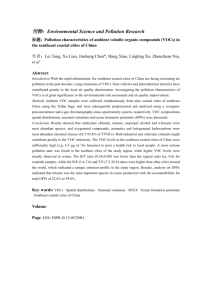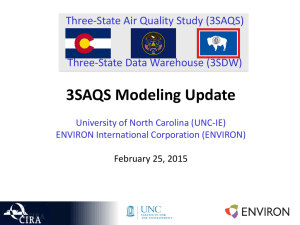Surface Coating VOC Calculations
advertisement
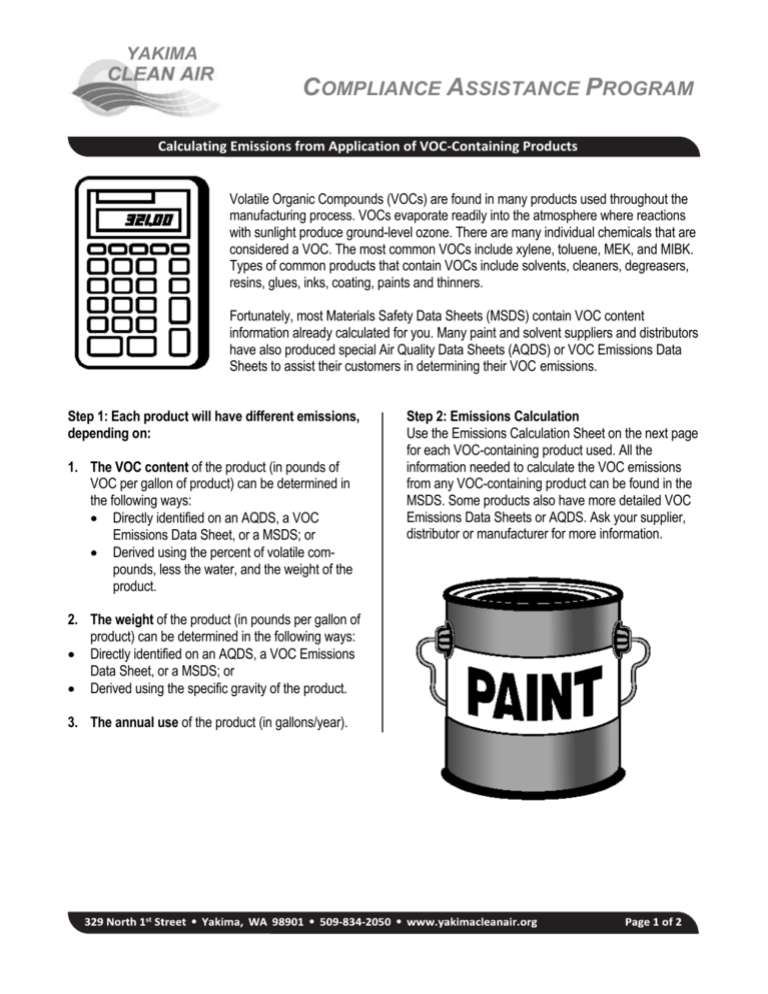
YAKIMA COMPLIANCE ASSISTANCE PROGRAM Calculating Emissions from Application of VOC-Containing Products Volatile Organic Compounds (VOCs) are found in many products used throughout the manufacturing process. VOCs evaporate readily into the atmosphere where reactions with sunlight produce ground-level ozone. There are many individual chemicals that are considered a VOC. The most common VOCs include xylene, toluene, MEK, and MIBK. Types of common products that contain VOCs include solvents, cleaners, degreasers, resins, glues, inks, coating, paints and thinners. Fortunately, most Materials Safety Data Sheets (MSDS) contain VOC content information already calculated for you. Many paint and solvent suppliers and distributors have also produced special Air Quality Data Sheets (AQDS) or VOC Emissions Data Sheets to assist their customers in determining their VOC emissions. Step 1: Each product will have different emissions, depending on: Step 2: Emissions Calculation Use the Emissions Calculation Sheet on the next page for each VOC-containing product used. All the information needed to calculate the VOC emissions from any VOC-containing product can be found in the MSDS. Some products also have more detailed VOC Emissions Data Sheets or AQDS. Ask your supplier, distributor or manufacturer for more information. 1. The VOC content of the product (in pounds of VOC per gallon of product) can be determined in the following ways: Directly identified on an AQDS, a VOC Emissions Data Sheet, or a MSDS; or Derived using the percent of volatile compounds, less the water, and the weight of the product. 2. The weight of the product (in pounds per gallon of product) can be determined in the following ways: Directly identified on an AQDS, a VOC Emissions Data Sheet, or a MSDS; or Derived using the specific gravity of the product. 3. The annual use of the product (in gallons/year). • • • YAKIMA COMPLIANCE ASSISTANCE PROGRAM Emissions Calculation Sheet Name of Product 1. Enter the VOC content of the product lb VOC/gal 2. If the VOC content is not given, then: a. Enter the % volatiles of the product b. Enter the weight of the product c. Multiply line 2a by line 2b and enter % lb/gal lb VOC/gal 3. If the weight of the product is not given, then: a. Enter specific gravity of the product b. Multiply line 3a by 8.34 c. Enter 3b result in line 2b lb/gal 4. Enter the amount of the product used last year gallons/yr 5. Multiply line 1 or line 2c by line 4 and enter lbs VOC/yr 6. Divide line 5 by 2,000 and enter tons VOC/yr Line 6 is the estimated tons of VOC emitted per year from the application of this VOC-containing product. More Information For more information about surface coating or any other air quality requirements, please contact Yakima Regional Clean Air Agency, 509 834-2050 or www.yakimacleanair.org Calculations courtesy of Oregon Department of Environmental Quality * Original document information provided by Spokane Regional Clean Air Agency • • •

